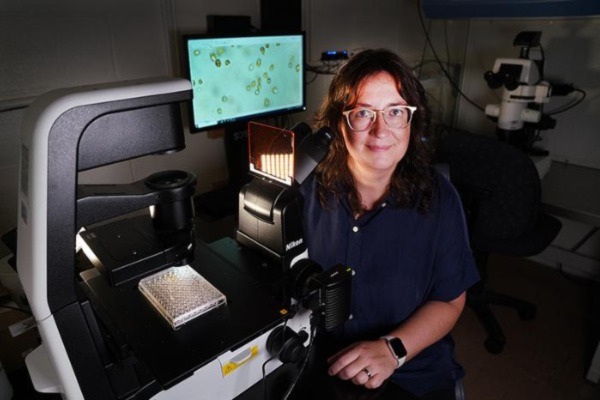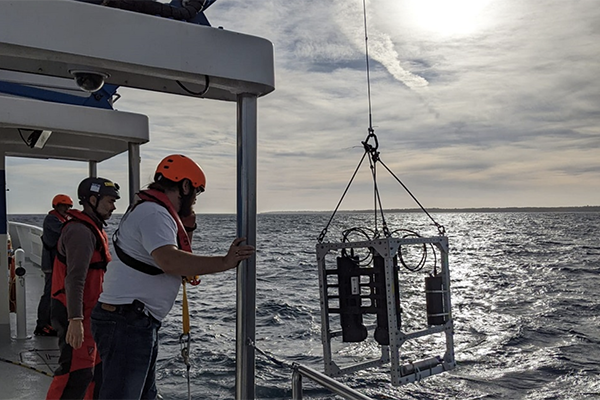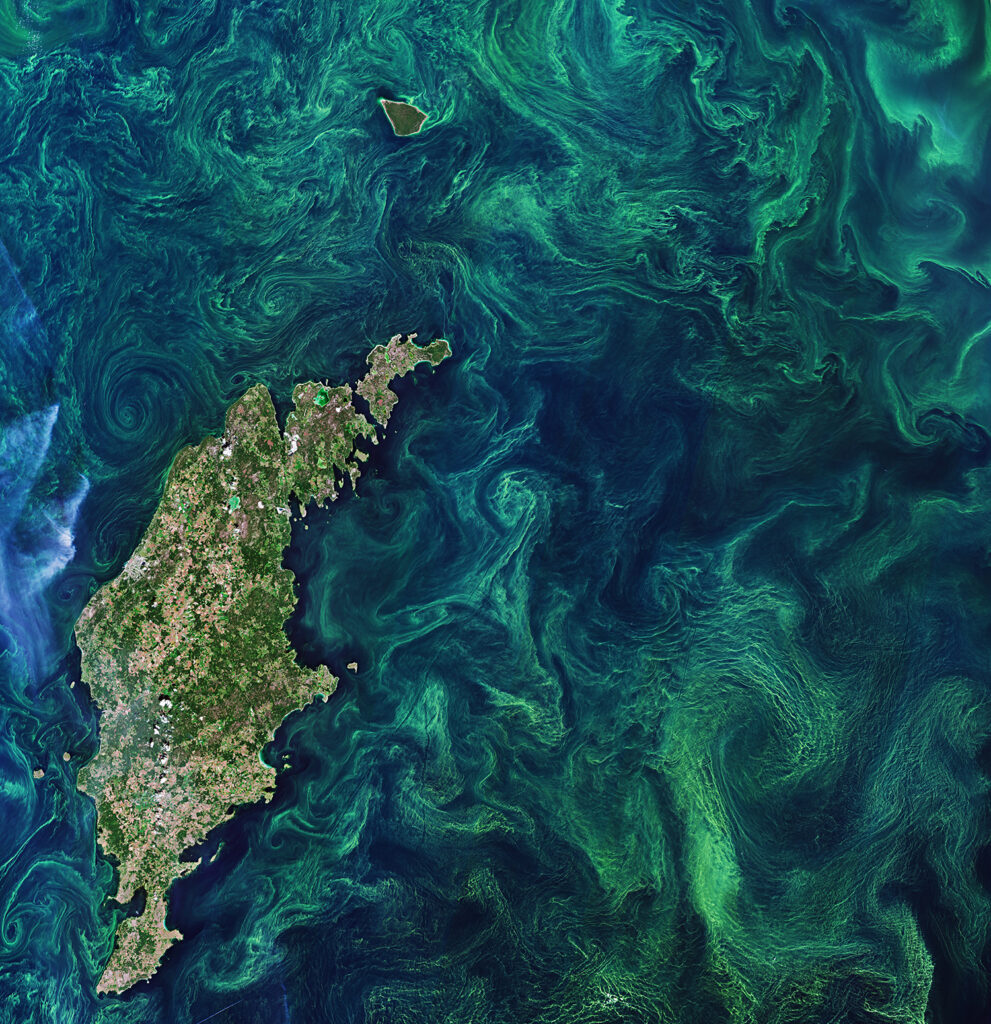Findings could help better predict harmful algal blooms

A microscopic species of algae is causing harmful algal blooms around the world, affecting two dozen states in the U.S., especially Texas. New research into the genetic diversity of the responsible organism, Prymnesium parvum, could help authorities predict when blooms will occur.
“When they bloom, they do more than kill fish,” said Jennifer Wisecaver, associate professor of biochemistry at Purdue University. “They disrupt whole ecosystems.”
Prymnesium, like many other single-celled organisms, along with all animals, plants and fungi, are eukaryotic organisms. Their cells all contain a nucleus. But Prymnesium are also classified as protists, meaning they are neither animal, plant nor fungi. And like plants, Prymnesium has chloroplasts to harness energy from the sun, which makes them algae.
Prymnesium blooms every winter in Texas, leading the Texas Parks and Wildlife Department to monitor several lakes for signs of the next one. The organism first bloomed in 1980 in the Pecos River.
“Since then, Prymnesium has only gotten worse in Texas and its blooms have spread into nearby states,” Wisecaver said.
Prymnesium has yet to plague Indiana waters, but it has appeared in northern U.S. states such as Nebraska, Iowa and West Virginia.
“They can’t grow in completely freshwater. They will die,” Wisecaver said. “But they are extremely tolerant of low salt levels and can survive in water with only 1 percent the salinity of typical seawater.”
What allows the organism to invade freshwater systems is among the questions Wisecaver’s lab is trying to answer. Last year, Prymnesium bloomed for the first time ever in Germany’s Oder River, whose waters have a low saline content.
“Prymnesium is a bit of a conundrum,” Wisecaver said. “It seems to bloom in suboptimal conditions for the species. It blooms in extremely low salinity and when nutrients aren’t very abundant.”
Can machine learning using climatic pattern data help predict harmful algal blooms earlier?
Current predictions of when harmful algal blooms will occur are based mainly on water conditions such as nutrients, salinity and temperature. But biological factors also could loom large.
“Different Prymnesium strains can make different types of toxins. Some strains are highly toxic, while others are less so,” said Wisecaver. “If we’re not accounting for these biological differences, that will affect our ability to predict when blooms will most likely occur and the effect that they’ll have on the environment. But before we can study the genes responsible for these differences, we first needed to sequence the genome of these organisms.”
At first, Wisecaver thought her group could sequence just one genome for Prymnesium parvum to act as a reference.
“Prymnesium genomes are large, being the size of many plant or animal genomes,” Wisecaver said. “Typically, it isn’t practical to sequence multiple genomes from a single species. Instead, we planned to compare the genetic composition of strains that differed in toxicity to one reference genome. However, we quickly discovered that there wasn’t just one genome to sequence. We needed to sequence many genomes to get a handle on the diversity that was present.”
When examined under a microscope, all specimens of Prymnesium look alike. Yet the genomes of the single-celled Prymnesium strains in the new study contained from 115 million to 360 million DNA base pairs.
“That’s an incredible variation in genome size. Far too much to be considered a single species,” Wisecaver said. “Turns out that blooms of Prymnesium are not just one big population. They are multiple populations, multiple different species.”
Figuring out that one of the genomes under analysis was a hybrid proved to be another challenge.
“Putting a genome together is like putting together a large, complex jigsaw puzzle,” Wisecaver said. “But imagine that we had two jigsaw puzzles mixed together. We thought we were working on one puzzle when we were actually dealing with two. That took extra analysis to figure out.”
“Despite the importance of algae, this work is only the second example of a genomic description of algal hybridization,” said Timothy Fallon, a National Institutes of Health National Research Service Award Postdoctoral Fellow at UCSD. “It sheds light on a whole mode of evolution that hasn’t been well considered because the tools and the road map for how to use them weren’t there. Now the tools exist, and through this work a new road map exists to use those tools to study hybridization.”
Now that you've reached the end of the article ...
… please consider supporting GSA’s mission to advance responsible seafood practices through education, advocacy and third-party assurances. The Advocate aims to document the evolution of responsible seafood practices and share the expansive knowledge of our vast network of contributors.
By becoming a Global Seafood Alliance member, you’re ensuring that all of the pre-competitive work we do through member benefits, resources and events can continue. Individual membership costs just $50 a year.
Not a GSA member? Join us.
Author
-
Responsible Seafood Advocate
[103,114,111,46,100,111,111,102,97,101,115,108,97,98,111,108,103,64,114,111,116,105,100,101]
Tagged With
Related Posts

Intelligence
FAO issues ‘roadmap’ for early harmful algal bloom warning systems
Document provides guidance to implement or improve early warning systems for harmful algal blooms that threaten seafood and public health.

Innovation & Investment
FAU: Holographic microscopy may provide an effective red tide warning system
An autonomous, submersible, 3D holographic microscope and imaging system could provide an effective red tide warning system, a study finds.

Health & Welfare
Grant to fund training for tackling harmful algal blooms
A new training program is being developed to help UK seafood producers detect and report harmful algal blooms in open coastal waters.

Innovation & Investment
NOAA helps fund the launch of harmful algal bloom control center
NOAA awarded $7.5 million to launch a technology incubator with a mandate to “advance innovative ways to control harmful algal blooms."



